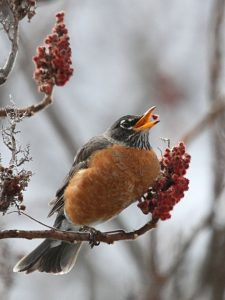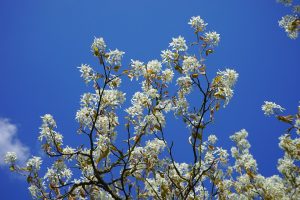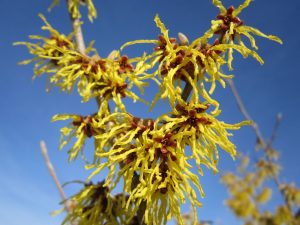We’re starting this post with a detour. But we have little choice. Before you go shopping around for landscape plants, you need to know the backstory.
Invasive plants, trees, shrubs, vines and flowers, many of them brought from afar because yes, they’re lovely in the landscape, have become a bit too much of a good thing. In part it’s because they didn’t evolve here. That could mean the critters — mostly insects or pathogens that co-evolved with them and helped keep them in check — don’t live here. Where that’s the case, there’s little here to naturally keep them in check.

True, not all imported plants are invasive. But it’s all too easy to dig up a seedling or sucker from an invasive when you don’t know the extent of the problem. Which is partly why New York passed the Invasive Species Prevention Act in 2012.
Native plants, on the other hand, are less likely to get out of hand. Plus they can encourage biological control by attracting predatory or parasitoid insects — the good guys that prey on insect pests. And promoting these good guys is key to good IPM.
So with Earth Day in mind and planting season at hand, let’s note this threesome of invasive trees: angelica tree, sycamore maple, and Amur cork tree. These landscape trees are no longer for sale in New York. For a threesome of attractive natives that can fill their place — while helping the birds and bees — consider the merits of (drum roll) staghorn sumac, Juneberry, and white fringetree.
As we speak, migrating birds are stripping last year’s crop of staghorn sumac seeds, now mostly dry and withered but still nourishing, to power their northbound flight. Love birds? Your sumac planting will benefit robins, bluebirds, thrushes, catbirds, cardinals, chickadees, starlings, wild turkey, pileated woodpecker — and that’s just for starters. Soon its tiny yellowish flowers will attract bees and butterflies. Fiery autumn color. Drought resistant, and an excellent soil stabilizer on hillsides.

Juneberry (Amelanchier spp., with more common names than you can shake a stick at) is also an early bloomer that draws hummingbirds, bees, and butterflies. When its fruits ripen in early summer, robins, waxwings, cardinals, vireos, tanagers, and grosbeaks make a point of stopping by for a meal. You might too — the subtle flavor, shape, and color are reminiscent of blueberries. Grows well in full sun or part shade; adapts to wet or dry soils — but note soil must be acidic.
And then — raise your hand if you’ve seen our native witch hazel. This late bloomer is (metaphorically, that is) the golden chrysanthemum of the woods, daring to blossom when other trees have tucked in for a long winter’s nap. How to describe its flowers? Ribbonlike. Spidery. Kinky. Confetti-like — these all serve for a tree that’s the only show in town. But … if pollinators have tucked in too, how to play the pollination game? Turns out a native moth, the sallows, comes out on chilly nights — shivering its flight muscles and raising its body temperature upward of 50 degrees, then flying off search of food. And during a warm spell, bees will sup here too. Yes, this tree benefits birds and wildlife too, but more on that another time.

Common to all? They fit neatly under power lines.
And now a plug for IPM: it’s easy to talk about the birds and bees. Yet so many critters are on our side. Understandably we shudder when wasps and flies come to mind. But consider the scads of wasp and fly species that are on our side. Hey, plenty of wasps don’t even have stingers; they care only to lay their eggs within pest insects. Flies? Ever heard of flower flies? They do what their names suggests, while their larvae prey on aphids and thrips. And there’s scores more good guys in the family they belong to.
You can find plenty of detailed info here: Finding Alternatives to Invasive Ornamental Plants in New York. And know that we’re hosting a statewide IPM conference on invasive species and what to do about them on July 13. Save the date!